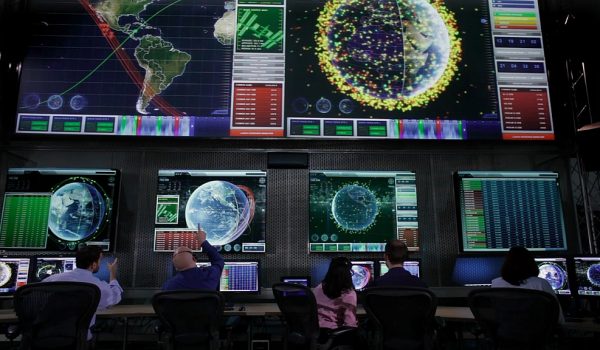
The Air Force Life Cycle Management Center recently put out a request for proposal (RFP) for final development and construction of the Space Fence program. Contenders Lockheed Martin and Raytheon have submitted their bids. An award is expected in March 2013.
“Space situational awareness is a continual concern and challenge for U.S. and ally nations,” said Ken Francois, Space Fence program manager. “The Space Fence program will increase the capability to provide predictability in reducing the chance of a collision or attack.”
The Space Fence program will provide a radar system operating in the S-band frequency range to replace the Air Force Space Surveillance System VHF “Fence” radar that currently detects orbiting space objects. The Space Fence system will be composed of up to two land-based radars. The first site has already been defined and will be located at Kwajalein Atoll in the Republic of Marshall Islands, South Pacific, with the task of tracking objects entering Earth’s orbit. The site will be the foundation of the improved awareness system with an expanded ability to detect, track, identify, and characterize much smaller orbiting objects especially in low and medium Earth orbits. Program officials stated that the radar will be able to track from commercial and military satellites to smaller objects, maneuvering satellites, break-up events, and lower inclination objects.
In early 2011, Lockheed Martin and Raytheon were awarded an 18-month contract to develop preliminary system designs and prototypes as well as to conduct radar performance analyses, evaluations, and other technical activities. As a result of these activities, they developed working radar prototypes capable of detecting and tracking a resident space object. The new RFP includes an open competition to award a contract for the development and construction of Space Fence Operations Center, Site 1 and an option for Site 2. The award will move the program forward to the initial operational capability and is expected to be made in spring of 2013.
The Space Fence program is anticipated to have initial operational capability in 2017 and full operational capability in 2020.
Below, Greg Fonder, Lead System Analyst Space Fence, explains how Space Fence will track space objects, courtesy of Lockheed Martin.
[youtube http://www.youtube.com/watch?v=7SJdN90vT04]


















































































































![A trajectory analysis that used a computational fluid dynamics approach to determine the likely position and velocity histories of the foam (Credits: NASA Ref [1] p61).](https://www.spacesafetymagazine.com/wp-content/uploads/2014/05/fluid-dynamics-trajectory-analysis-50x50.jpg)



Leave a Reply